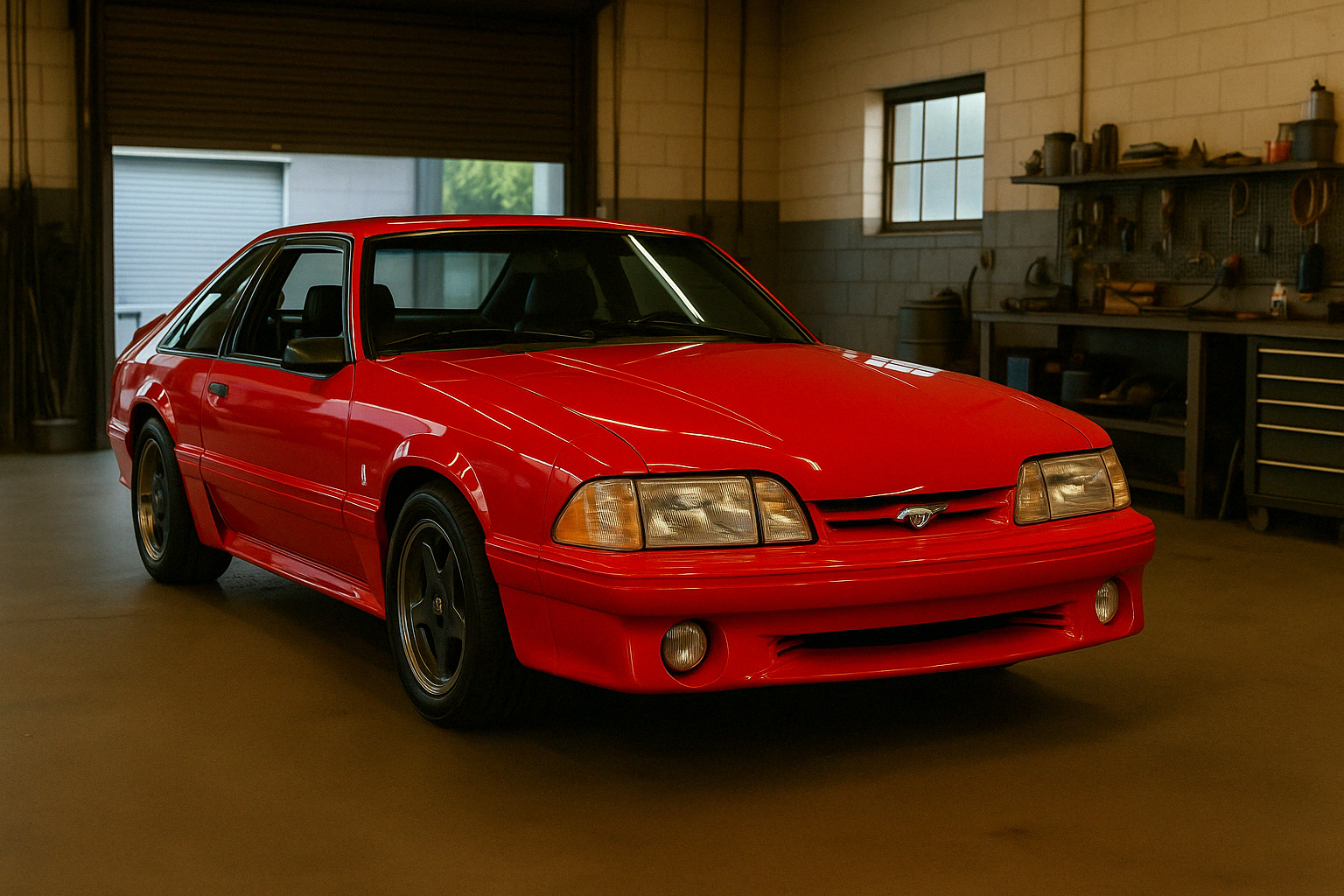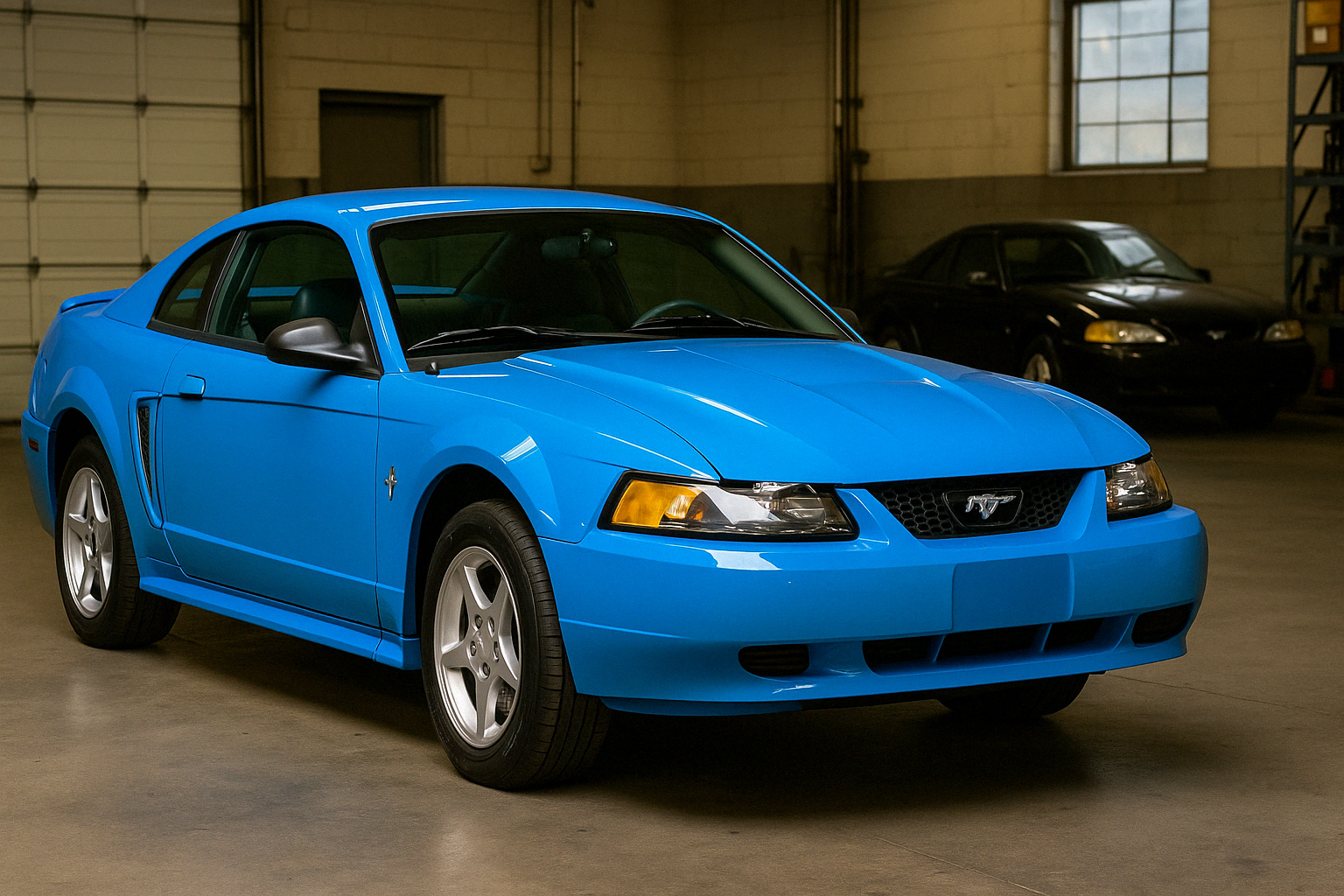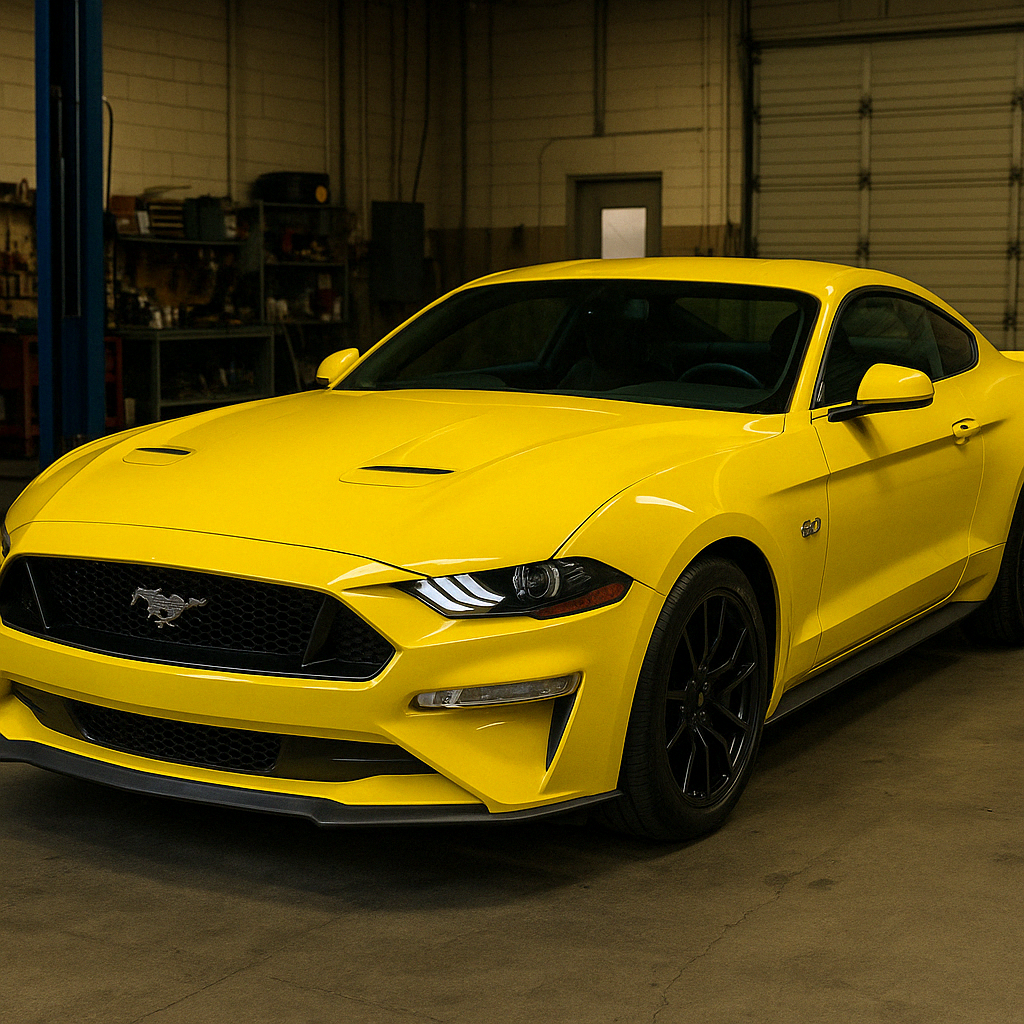How One $12K Mustang is Quietly Becoming a Goldmine
Author Bio: Danny is a co-owner of Driveway Dreams, an ASE Certified Master Technician with over 26 years of experience, and previous freelance writer for Car Engineer. For more than 17 years, he's owned and operated his own independent repair shop in Livonia, Michigan. Subscribe and follow, Danny!

Alright, listen good.
You’re craving a Mustang.
That classic American muscle that growls down the street, turns heads, and leaves tire marks as proof of its might.
But here’s the real talk most Mustang lovers won’t admit:
Mustangs? They’re a commitment. A loud, demanding, greasy-handed commitment.
I've seen transmissions obliterate themselves during burnouts, rear-ends twist like pretzels at traffic lights, and chassis rust quicker than a tuna can left in the rain.
Mustangs are not casual relationships—they’re full-blown lifestyle choices.
Here in 2025, though? One Mustang generation actually makes sense.
But first, let's walk through the good, bad, and very ugly of every Mustang generation, so you avoid costly mistakes.
Danny's Insider Mustang Buyer's Guide
After 26 years working on America's pony car, I've compiled a comprehensive guide on how to avoid the money-pit Mustangs and find the gems. Get my generation-by-generation breakdown of what to look for (and what to run from).
Join 12,000+ enthusiasts getting my insider tips
First-Gen Mustang (1964½–1973): Legendary Nightmares
Everyone romanticizes this car—until they try to actually drive it.
It’s a gorgeous money pit with ‘60s tech and 2025 prices.
Yeah, these Mustangs look fantastic parked outside a diner—nostalgia at its peak. But daily driving? That’s a whole other nightmare.
Brakes weaker than your grandma’s handshake and handling more vague than your dad’s directions.
Sure, everyone swoons over the '69 Mach 1—but keeping that beauty roadworthy means emptying your wallet.
Evidence:
- Pros: Classic design, unmatched street presence.
- Cons: Severe rust issues, scarce expensive parts, outdated mechanics.
- Average Miles: 60,000–100,000 miles
- Price: $18,000–$100,000+ (excellent condition, Hagerty Valuation Tool)
- Common Repairs: Drum brakes ($300), Steering box ($400), Carb rebuild ($350), Rust repair ($2,000+)
- Annual upkeep: $1,500–$3,500
- Market Analysis: Appreciated around 20% over the past three years (ClassicCars Market Report)
Shop Story:
A customer brings in a mint-looking '68 fastback claiming "just a brake inspection."
Surprise: full brake system overhaul needed, steering box hemorrhaging fluid.
Handed him a $15k bill; the car never left the shop again.

Verdict: Iconic showpiece, wallet-devouring maintenance nightmare.
Fantastic on a postcard, but unless you’re restoring for Barrett-Jackson, this thing will crush your finances mile by mile.
If this seems rough, wait until you see the Mustang everybody loves to forget.
Mustang II (1974–1978): Malaise-Era Misstep
This is the Mustang Ford built when they were out of ideas—and horsepower.
A slow, awkward attempt to dodge emissions rules that ended up embarrassing everyone.
This Mustang isn’t winning any drag races—unless it's against a bicycle.
Built on Pinto bones, barely faster than your lawnmower.
Evidence:
- Pros: Affordable, somewhat fuel-efficient.
- Cons: Pathetically slow, poor parts support.
- Average Miles: 70,000–120,000 miles
- Price: $5,000–$15,000 (Mustang II Market)
- Common Repairs: Exhaust system ($300), Fuel pump ($150), Significant rust repair ($1,000+)
- Annual upkeep: $1,000–$2,000
- Market Analysis: Appreciated slightly due to rising rarity (~10%) (ClassicCars Market Report)
Shop Story:
Guy drags in a ’76 Cobra II, treats it like gold.
Complains about power loss.
Told him, “Sorry buddy, that's factory performance.”
His smile vanished, sold it online quickly after.

Verdict: Nostalgically ironic, practically worthless.
You’ll get more horsepower out of a weed whacker—and it won’t leak oil in your driveway.
Ready for good news? Here’s the generation quietly making smart enthusiasts rich.
Fox Body Mustang (1979–1993): Hidden Treasure
Here’s the Mustang that’s actually appreciating.
Raw, light, fast, and cheap to wrench on—it’s everything a modern collector dreams of with none of the gimmicks.
Welcome to the Mustang sweet spot.
This generation has quietly become a cash cow—classic enough to turn heads, modern enough to daily drive.

Evidence:
- Pros: Powerful 5.0 V8, extensive modding community, ample parts supply.
- Cons: Scarcity of clean, unmodified examples.
- Average Miles: 80,000–150,000 miles
- Price: $8,000–$25,000 (Fox Body Trends)
- Common Repairs: Torque box reinforcement ($200), Subframe connectors ($250), Valve cover gaskets ($50)
- Annual upkeep: $500–$1,500
- Market Analysis: Explosive 50% appreciation over the past three years due to surging collector interest (Hagerty)
Shop Story:
Client brought a pristine, original '89 LX.
Just wanted basics checked.
Told him he hit the jackpot—no structural damage, rare condition.
Two years later, worth $5k more than he paid.

Verdict: Prime investment, buy now before prices double.
The Fox is the only Mustang under $20k that’s climbing in value while still being easy to fix and even easier to thrash.
"Know Exactly When To Buy Your Fox Body Mustang
I track Mustang listings across the country daily. Join my free price alert list and I'll tell you when Fox Body prices hit the sweet spot—plus which specific VIN patterns to avoid based on my shop experience.
- Weekly price trends for all generations
- Buy/hold/avoid recommendations for specific years and trims
- Shop stories about real-world reliability
SN95/New Edge (1994–2004): Reliable Boredom
Ford tried to refine the Fox—and in doing so, dulled the blade.
These cars are fine. Just fine. And that's the problem.
These Mustangs won’t break your bank, but they won’t thrill your heart either.
Great daily drivers—if you don’t mind boredom behind the wheel.

Evidence:
- Pros: Affordable, reliable, daily drivable.
- Cons: Bland performance, negligible collectability.
- Average Miles: 90,000–160,000 miles
- Price: $6,000–$15,000 (Classic.com)
- Common Repairs: Window motors ($100), Clutch ($600)
- Annual upkeep: $700–$1,500
- Market Analysis: Stagnant values, minimal recent appreciation.
Verdict: Solid commuter, weak investment.
Great if you need a cheap ride that says 'Mustang' on the fender—but don't expect it to ever climb in value or turn heads doing it.
S197 Mustang (2005–2014): Muscle, Modernized
This is where the retro styling met real horsepower.
But it’s also where depreciation comes to kick you in the ribs the minute you sign the title.
Meet the Mustang that finally brought performance back into the 21st century.
Solid modern muscle—but watch out for depreciation.

Evidence:
- Pros: Strong engines, contemporary design.
- Cons: Ongoing depreciation.
- Average Miles: 60,000–120,000 miles
- Price: $10,000–$35,000 (Kelley Blue Book)
- Common Repairs: Ball joints ($300), Spark plugs ($150)
- Annual upkeep: $700–$1,500
- Market Analysis: Modest appreciation for special editions, general depreciation plateaued.
Verdict: Excellent performance buy, limited financial upside.
Plenty of speed and modern muscle feel—but unless it’s a Boss or Shelby, it’s stuck in value limbo.
S550 Mustang (2015–2023): Modern Muscle Masterpiece
The Mustang finally grew up.
Independent rear suspension, turbo options, high-revving V8s—it’s a modern-day weapon.
But it's also a bank-drainer.
This Mustang generation packs a serious punch with tech, handling, and power—just don’t expect it to hold its initial value.

Evidence:
- Pros: Cutting-edge tech, excellent handling.
- Cons: High depreciation, expensive initial costs.
- Average Miles: 30,000–80,000 miles
- Price: $20,000–$60,000+ (CarGurus)
- Common Repairs: Brake pads/rotors ($500), Tires ($800)
- Annual upkeep: $800–$2,000
- Market Analysis: Depreciation slowing, strong future collectability potential.
Verdict: Premium enthusiast vehicle; costly yet rewarding.
A blast to drive and mod, but if you're chasing ROI, you're in the wrong showroom.
Final Verdict:
Let’s lay it all out:
The First-Gen? Gorgeous garage trophies that will bleed you dry.
The Mustang II? A historical punchline on Pinto wheels.
SN95s? Fine if you want a cheap commuter—but don't expect any street cred.
The S197? Packs a punch, but you're still chasing depreciation.
S550? Modern magic, but you’ll eat that depreciation curve for breakfast.
And the Fox Body?
It’s the perfect storm—rising value, simple mechanics, massive aftermarket, and pure 80s/90s muscle charm.
It’s a car you can work on, drive hard, and still sell for more than you paid if you play it right.
This isn’t just about nostalgia—it’s about smart money.
So if you want a Mustang that won’t wreck your bank account and will actually grow in value?
Buy the Fox.
Keep it clean. Keep it running. Keep it forever—or flip it for a profit when the time is right.
The Fox Body is the truth.
Everything else? Fiberglass fantasy or plastic regret.
Case closed.
"Track Fox Body, SN95 & S197 Prices: The Best Mustang Models
Get price alerts for the three best Mustang models worth buying in 2025: Fox Body (1979-1993), SN95 (1994-2004), and S197 (2005-2014). Be first to know when these models hit their price sweet spots.
- Weekly price trends for all three recommended models
- First notice when well-maintained examples appear within 100 miles
- Expert alerts on which specific years and options to avoid

